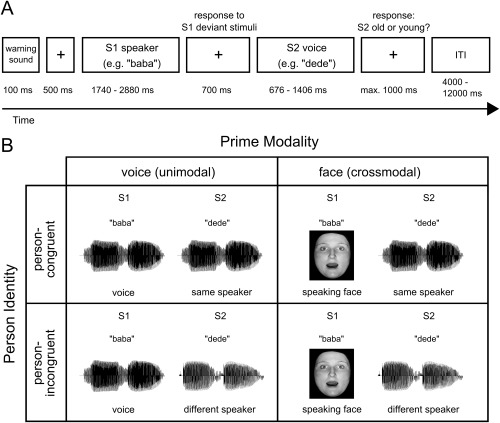Figure 1.

Illustration of the experimental design. (A) Timing and tasks of the experiment. Two stimuli (disyllabic pseudowords) were successively presented. The second stimulus (S2) was always a voice. Participants indicated whether the S2 voice was from an old or from a young person. Additionally, participants had to detect deviant S1 stimuli (11.1% of all trials). ITI = intertrial‐interval. (B) Conditions of the experiment. Two factors (prime modality, person identity) were manipulated within participants. Prime modality: the S1 stimulus was either a silent video of a speaking face (crossmodal condition) or a voice stimulus (unimodal condition). Person identity: in 50% of the trials, S1 and S2 belonged to the same speaker (person‐congruent); in the other 50%, S1 and S2 belonged to different speakers (person‐incongruent). To avoid physically identical voice pairs in the unimodal person‐congruent condition (voice‐voice), different pseudowords were used as S1 and S2 in all conditions, e.g. “baba” as S1 and “dede” as S2.
